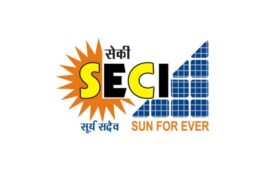Highlights :
- India’s discoms face severe financial strain which stand at around 22 percent, nearly three times the global average of 7-8 percent
- To solve one of the challenges of balancing grid effectively, the country will require 27 GW of storage capacity by 2030

India’s journey to a net-zero energy future demands an extensive transformation in its power market. As the country intensifies efforts to increase renewable energy (RE) capacity and to realise its 2030 and later net zero goals, numerous challenges—structural, financial, and operational—are emerging, presenting formidable obstacles to integrating a growing share of RE into the national grid.
Recent research paper titled “India’s pathway to net zero by 2070: status, challenges, and way forward” by CEEW identifies several challenges that await the country on its path to a renewable future. The writers are Disha Agarwal( Senior Programme Lead, Renewables) and Shalu Agrawal (Director, Programmes at CEEW).
1. Inadequate Resource Planning
One of India’s foremost challenges in managing renewable integration is the lack of comprehensive resource adequacy frameworks. Many states struggle with forecasting energy needs accurately due to variations in load forecasting and limited capacity in institutional resources. Consequently, this often results in energy surplus, as seen in 2020 with an estimated 35 GW surplus capacity. Improving these planning processes could streamline RE integration and reduce overcapacity
2. Rigid Contractual Structures and Inefficiencies
The reliance on rigid, long-term power purchase agreements (PPAs) by distribution companies (discoms) often limits the flexibility needed to optimise resource use. These agreements typically include take-or-pay clauses and inflexible minimum loading conditions, which can lead to high fixed costs.
This structure not only inflates energy procurement costs but also hinders the efficient dispatch of resources, with estimates suggesting that addressing these inefficiencies could save India approximately USD 5 billion annually. Flexible contractual models are necessary to allow dynamic adjustments that reflect real-time RE availability
3. Financial Distress of Public Discoms
The poor financial health of public discoms is a significant challenge. High levels of aggregated technical and commercial (AT&C) losses—three times the world average—alongside high power purchase costs and inadequate tariff designs, have financially constrained most discoms. This financial strain affects their capacity to invest in essential upgrades, comply with renewable purchase obligations, and facilitate infrastructure expansion necessary for scaling RE.
India’s discoms face severe financial strain which stand at around 22 percent, nearly three times the global average of 7-8 percent. This is compounded by high power purchase costs and suboptimal tariff designs. Most discoms report annual revenue gaps and are unable to cover RE purchase obligations or invest in infrastructure upgrades essential for RE scalability
4. Market Liquidity and Fragmentation
India’s electricity market remains fragmented and illiquid, with only around 7 percent of electricity being traded through power exchanges in 2021–22. This limited market depth increases price volatility, making it difficult to cost-effectively integrate RE.
Furthermore, Legacy PPAs and isolated trading platforms further exacerbate the problem by preventing smooth market operation and liquidity.
5. Grid Infrastructure and Storage Challenges
The transition to renewables necessitates robust grid infrastructure capable of handling the variability of RE sources like solar and wind. The existing grid infrastructure is insufficient for managing the variable nature of solar and wind energy. The limited deployment of scalable and cost-effective storage technologies like battery energy storage systems (BESS) and compressed air energy storage further complicates RE integration. Notably, the country will require approximately 27 GW of storage capacity by 2030 to balance the grid effectively.
To meet RE goals, India needs extensive investment in grid-scale energy storage, including BESS and compressed air energy storage, as well as expanded transmission capacity. As of March 2024, India had achieved a total installed energy storage capacity of 219.1 MWh, or roughly 111.7 MW.
6. High Cost of Renewable Investments
India’s renewable energy ambitions face the bottleneck of high upfront costs, particularly for solar and wind projects. There is a significant financing gap in the sector. As per the research report, there is a need for substantial capital of around USD 223 billion between 2022 and 2029. This financial strain is especially heavy for lower-income regions within the country, where mobilising such investments is more challenging.
7. Dependence on Imports for Critical Minerals
Renewable energy technologies depend on critical minerals, most of which India imports, posing energy security risks. Notably, over 80 percent of lithium-ion batteries, for example, are currently imported.
As the nation ramps up RE capacity, reliance on imported minerals for technologies like solar PV and battery storage could become a significant vulnerability, making domestic production capabilities and secure supply chains vital. Secure and stable supply chains are essential to avoid dependency risks, especially as RE technologies are scaled
8. Limited Demand-Side Flexibility and Consumer Engagement
Increasing renewable integration requires enhanced flexibility from demand-side resources. However, limited policy frameworks and technological readiness hinder this development. Moreover, the participation of residential and industrial consumers in programs like rooftop solar remains low due to high capital costs and insufficient incentives.
This is evident in India’s significant shortfall in meeting its 2022 rooftop solar target, achieving only 6.8 GW of installed capacity against the intended 40 GW goal.
India’s transition to a net-zero power market demands a multi-faceted strategy to address these challenges. Establishing an efficient, flexible, and financially sustainable market structure is crucial to integrating renewables at scale. By overcoming financial, infrastructural, and regulatory barriers, India can pave the way for a resilient energy system that aligns with its ambitious net-zero goals.






























